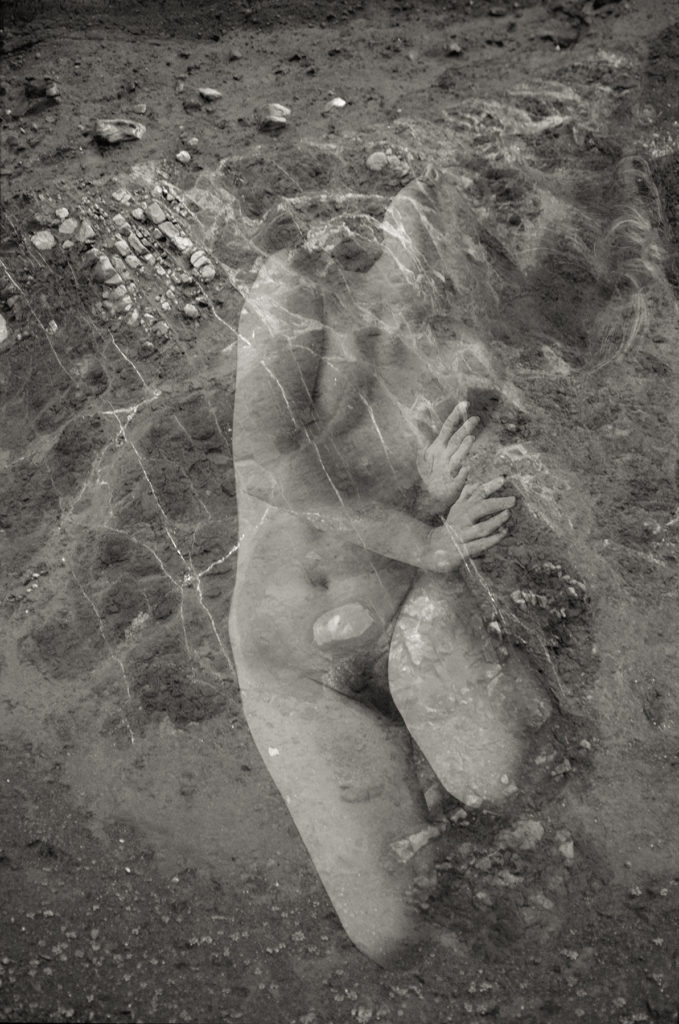
.
The Sensual Land
.
The Sensual Land is a poetic exploration of the symbiotic relationship between man and nature. Through the integration of the figure and natural features, forms and textures, the boundaries of the “self” and notions of the “other” are called into question, blurring the distinctions between seemingly discrete entities and events in time. Dramatic visions of their mutual interpenetration point directly to the subtler evidence of their inseparability. The work suggests that the cycle of life and death, even identity, can be looked at as an integral process rather than a series of discrete events. This vision evokes a more primal way of relating to the earth as conscious, animate and unified rather than the traditional western view of nature as an unconscious, inanimate chaos of discrete entities. In this view, earth is seen as a living vessel that contains and sustains the processes of life. Water is seen as blood that cleanses and rejuvenates. Wind is seen as breath, the invisible coursing around us. Fire and light are seen as the emanations of an uncontainable spirit. The tracings and residues they leave behind and the tracings and residues man leaves behind in nature chart the passage of presences moving in time. The body of man is formed of nature, ingests her, imbibes her, inhales her, and returns to her. The body of man is a living temple, and nature is the body for a larger living spirit, the temple of a greater life, at once plural and singular. The themes of fertility, emergence, unfolding, growth, appearance and disappearance, emanation and penetration, permanence and impermanence, fragility and durability, permeate this work. These contemplative reflections suggest the unquantifiable. Transformation and integration, metaphor and simile, are at the root of their visual poetry. It is inevitable that nature and man leave indelible marks on one another, a process which is by no means omni-directional and possesses the capacity for being truly mutualistic. This work calls for the recognition of their sympathetic natures, that mankind and the land are both living sensual beings.



Sorry, the comment form is closed at this time.